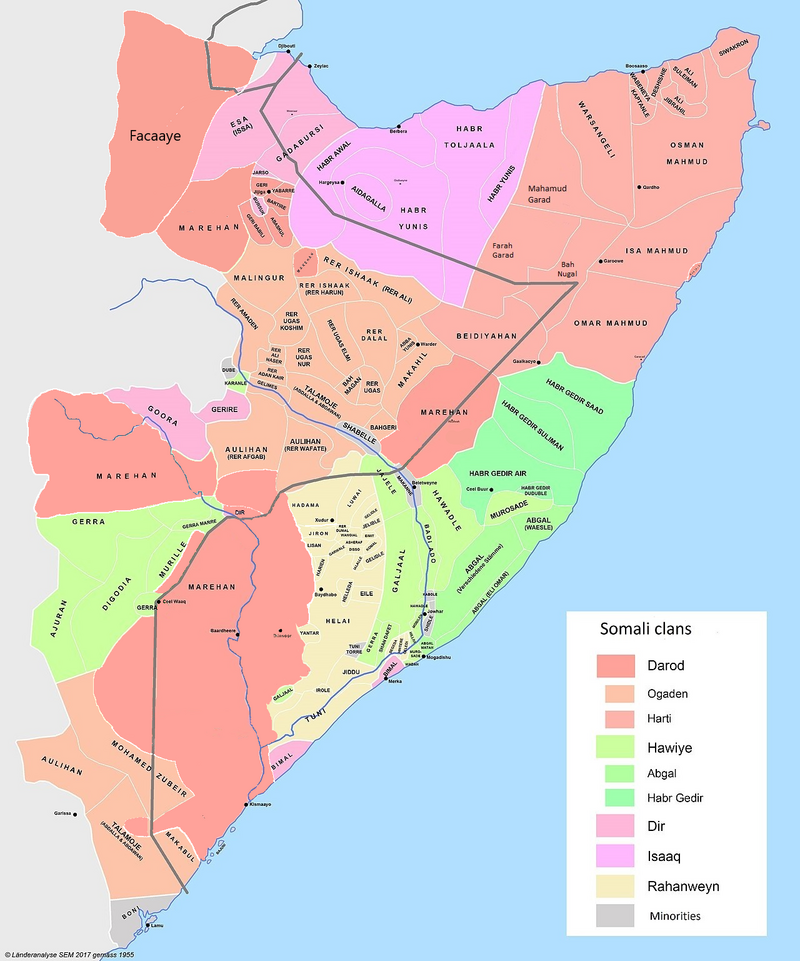Historical context
The clan system in Somalia is rooted deeply in the country’s culture and history. Predominantly pastoralist, the Somali people have organized themselves into clan families and sub-clans for centuries. These clans are not just social units and play an essential role, having a significant influence on the nation’s politics, social structure and ongoing efforts towards stability and governance.
The four major clans, also called noble clans, are the Dir, Darod, Hawiye and Isaaq. Of these, the Dir and Hawiye are regarded as descended from Irir Samaale, the likely source of the ethnonym Somali (soomaali). Darod have separate agnatic (paternal) traditions of descent from Abdirahman bin Isma’il al-Jabarti (Sheikh Darod)
Clan influence on politics
The political framework of Somalia has been profoundly shaped by the clan system. After the collapse of the Siad Barre regime in 1991, the absence of a central government led clans to become the primary units of political organization and power. Each clan has sought to protect its members and advance its interests, often leading to inter-clan conflicts.
The Provisional Constitution of Somalia, instituted in 2012, attempts to incorporate clan representation into governance through the “4.5 formula.” This system allocates equal representation to the four major clans, with a half representation to minority groups, thus embedding the clan structure into the legislative processes.
Social dynamics and clan loyalty
Clan loyalty plays a critical role in Somali society. It influences marriage, politics, business and social interactions. Clans provide a sense of identity and security to their members, which is vital in a country marred by instability and conflict. However, this strong clan allegiance can also lead to nepotism, corruption and exclusion, hindering national cohesion and inclusive governance.
Clans and conflict
The allegiance to clans has been both a protective mechanism and a source of conflict. Disputes over resources, territorial control and political dominance often escalate into armed confrontations between different clans or sub-clans. These conflicts have been a significant challenge in achieving lasting peace and rebuilding state institutions.
Efforts towards reconciliation
Efforts to mediate clan conflicts and promote reconciliation have been critical in Somalia’s slow progress towards stability. Initiatives by international organizations, the federal government and local leaders aim to bridge divisions and foster a sense of national identity that transcends clan lines. Such efforts include dialogue, peace conferences and inclusive governance models that seek to fairly represent all clans in decision-making processes.
Conclusion
The clans of Somalia, with their deep-rooted historical and cultural significance, continue to shape the nation’s destiny. While they offer essential support systems, their influence also poses challenges to state-building and peace. Understanding and integrating the complex clan dynamics into the broader national framework is essential for Somalia’s path towards stability, governance and development. As Somalia continues to navigate its clan landscape, the balancing act between respecting traditional clan structures and fostering a cohesive national identity remains more important than ever.
